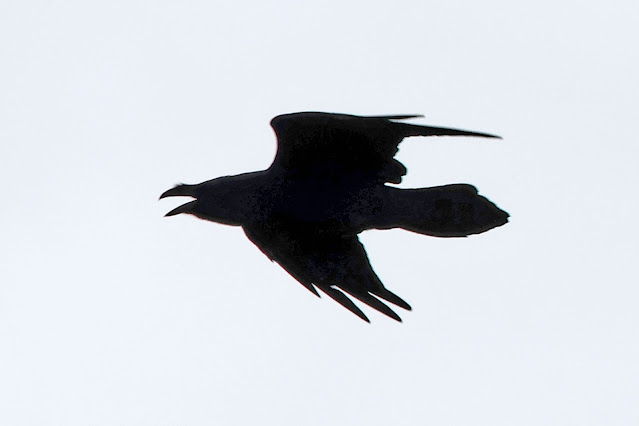The plan today was to go back to Hill Head early morning to search the tern roost that would be gathering on the beach at low tide. The weather was much better after the dreary conditions of the previous day, with sunshine and a fresh breeze. When I arrived there were good numbers on the exposed sand and quite a few fishing off shore. A scan through the birds on the beach found an adult Roseate Tern, the one I had missed yesterday. This bird had an almost all black bill and was much brighter than the accompanying Common Terns
There were two Common Sandpiper moving up and down the exposed mud in Duck Bay.
I reached a clump of bramble and was told the Starling was in the middle feeding on blackberries. It was possible to get a sight of it as it hid behind the bramble leaves.
The Rosy Starling is a passerine bird in
the starling family, Sturnidae, also known as the rose-coloured
starling or rose-coloured pastor. The species was recently placed in
its own monotypic genus, Pastor, and split from Sturnus. This split
is supported by recent studies, although there are no other related species
within its new genus as yet.
It remained elusive.
The breeding range of this bird is in steppes, semi-deserts
and deserts of Central Asia and Southeast Europe. It can be found from
northwestern Mongolia via Dzungarei, Xinjiang, Kazakhstan, Kyrgyzstan,
Tajikistan, Uzbekistan and Turkmenistan to southern Russia, Ukraine, Azerbaijan
and Armenia. Its southern range extends to the north of Afghanistan and Iran.
Irregular and rare broods are also observed outside of this area in Romania.
The Rosy Starling is known as a strong migrant, and winters
in India and tropical Asia. In the winter in India it often appears to
outnumber the local starlings and mynas. The Rosy Starling is a bird of steppe
and open agricultural land. In years when grasshoppers and other insects are
abundant, it will erupt well beyond its core range, with significant numbers
reaching France, the United Kingdom and Ireland. The starling is a summer
visitor for northwestern Afghanistan, passage migrants in the rest of the
Afghanistan and a regular winter visitor in India. 2020 was a particularly good year for them in
Britain.
Eventually it was relocated, but the views were even worse than when I arrived. Look closely and you can make out the starling in the middle of the image behind the leaves.
Do I wait and see if it shows or d I make my way home in what was now heavy traffic? I decided I had seen enough and headed home. The traffic was horrendous both through Lymington and then Lyndhurst, and on the motorway to Winchester.
It had though been a "rosy" day and the starling had the honour of being my 2000th bird on my world list





























No comments:
Post a Comment